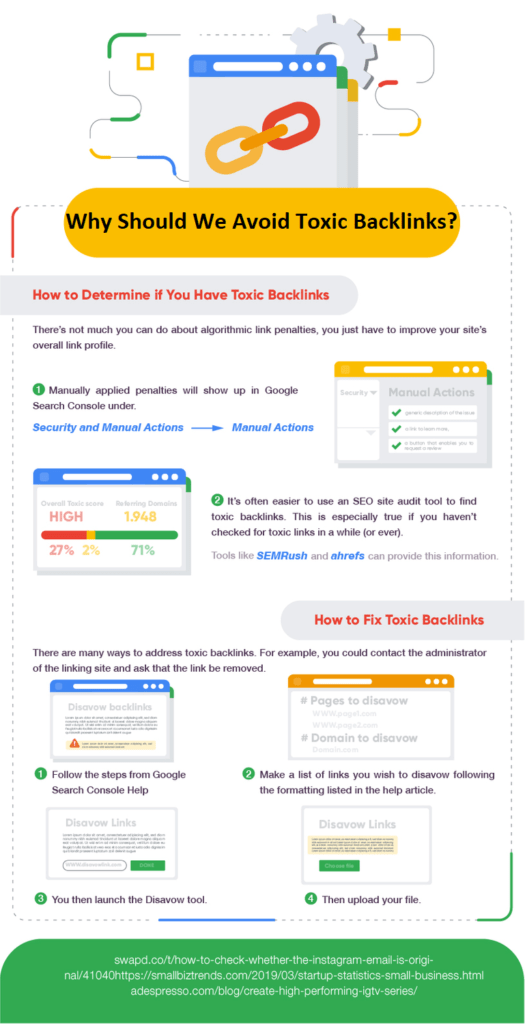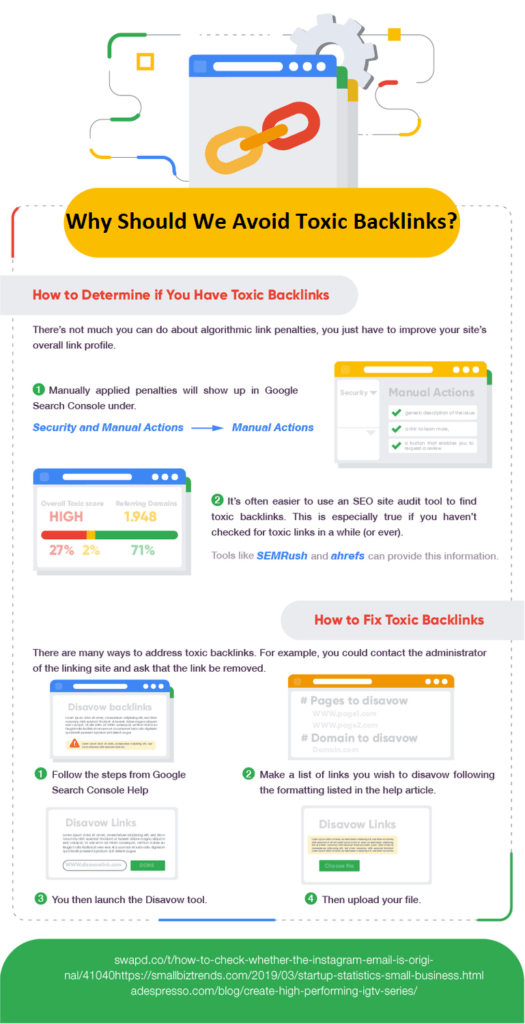
Have you ever thought of the quality of the backlinks you’re getting for your website? There are some backlinks that might dent your domain authority and lead to lower ranks in Google.
Search Engine Optimization is an integral part of digital marketing, especially during the global pandemic.
Using SEO tactics, you can increase your visibility and drive more traffic to your website, causing more sales.
Of course, reaching good traffic with the help of standard SEO techniques is a time-sucking task, and as a result, many marketers and website moderators use unusual methods. These methods are definitely dangerous for your site’s health score in the long term.
Getting toxic backlinks is one of the most detrimental approaches many SEO managers take. Although backlinks are essential to SEO, you should not say yes to any possible backlinks from any external pages.
Since getting toxic backlinks has become a common means of traffic growth, it’s good to review what they are and why they are harmful to your website.
Good Backlinks
Good backlinks are those links coming from related, quality articles on high-authority websites. These links lead to higher Trust Flow and also Citation Flow.
With the help of good backlinks, your site’s authority will increase and your articles will rank for targeted keywords.
In other words, the more good backlinks you get for a single page of your site, the better it ranks in Google.
Here are some metrics to know if a link is good:
1. Relevancy
You have to extract the keywords a site ranks for in Google to know if it is in your niche. You should not rely solely on the categories the site has on the homepage because they might have ranked for some spammy keywords.
2. Domain Authority
Domain Authority (DA) is a metric defined by MOZ and is a good factor to know if a site is good for link building. The higher the DA is, the better.
3. Spam Score
This is another metric defined by MOZ and is a measure of how spammy a site is. In fact, MOZ estimates the percentage of similar sites that have been penalized by Google and displays the spam score of the site accordingly.
4. Organic traffic
Traffic is one of the most important metrics to know if a site is performing well and shows how many users find and visit the site through search engine searches.
5. Age
The age of a website is also of great importance when it comes to credibility. You can check this from many online tools like SEO Checker.
Apart from these factors, you can also consider the proficiency and the design of the website. Valid sources usually have high-quality graphics and professional website architecture.
Moreover, the method of content creation can show the quality of a site. For example, if a site accepts any users and publishes their content without any reviews, it can’t be trusted and is highly likely to provide a toxic backlink.
On the other hand, if a website has a team of full-time, professional content creators, its content will definitely gain rank in Google and its backlinks are valuable.


Bad Backlinks
Bad backlinks come from low-quality websites and can significantly damage your Trust Flow, while your Citation Flow might still increase.
You need to avoid this if you want to become a niche thought leader and have stable organic traffic.
Some Types of Toxic Backlinks
Here are some examples of websites and sources you need to avoid getting backlinks from:
- Press releases
- Discussion forums
- Foreign guestbooks
- PBNs (Private Blog Networks)
- Social bookmarks
- Directory services
What to Do?
Now that you know the consequence of getting backlinks, you need to revise your previous SEO strategies to prevent further problems.
The question is if we should think about removing the previous toxic backlinks. The answer is yes. You need to find these backlinks and remove them from your backlink profile.
First, you need to recognize the toxic backlinks using a tool. Fortunately, there are a handful of famous tools such as Ahrefs, Moz, and SEMRush, using which you can mark all the links that are considered toxic according to their metrics.
That’s a huge step because you can easily remove them when you find the toxic backlinks. You then need to contact the webmaster and simply ask them to remove the links.
Also, you have to create a disavow file and submit it to Google to get it to ignore those links. This way, the detrimental effects of those links will be eliminated after a while, and you can track the health score of your website to make sure about the result.
Due to the importance of toxic backlinks in digital marketing, our team at Social Tradia gathered important information and created the following infographic to help content marketers and SEO managers improve their performance.


